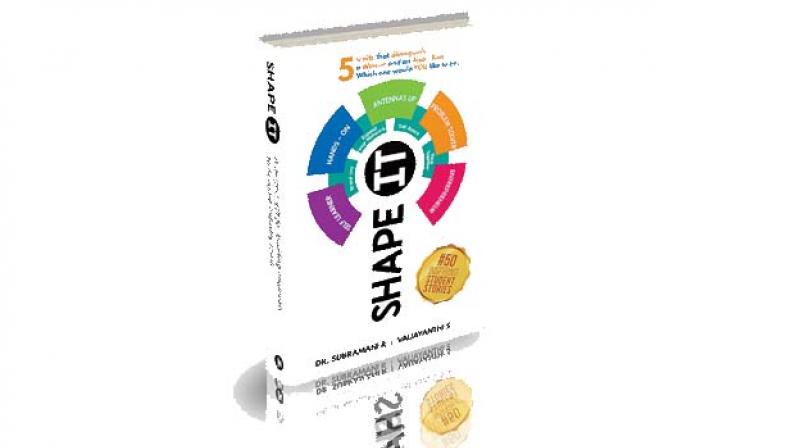Why keen engineers, entrepreneurs need to remember Dr Abdul Kalam
In what was a brainchild of Dr Kalam and B N Prasad of NIMS, they in 1998 brought out light weight calipers for the polio affected.

Chennai: Late President and India's formidable ‘Missile Man’, Dr A P J Abdul Kalam must have been the quintessential ‘fruits-are-the-uses-of-adversity’ Man. And as his second death anniversary falls on July 27, there could not have been a more appropriate occasion to recall how Dr Kalam so ingeniously transposed his knowledge gleaned while working with missile systems, to device low cost calipers for polio inflicted patients.
While working for decades on ‘ballistic missiles’, say the authors of this inspiring book, aimed at getting engineers and entrepreneurs stand up on their own feet when the Indian IT industry by far the largest employer of Engineering graduates in the last roughly 17 years, is facing a slowdown, Dr Kalam also “explored how defense or aerospace technology can be leveraged and how the vast experience of defense scientists and physicians could be brought together to save lives.”
In what was a brainchild of Dr Kalam and B N Prasad of NIMS, they in 1998 brought out light weight calipers for the polio affected. Developed from the same composite material “used to manufacture the nose cone of the Agni missile,” the light-weight calipers made up of “glass filled polypropylene”, weighed just 300 grams. It came at a time when polio patients used to wear calipers that weighed around four kilograms. And not only the weight, the price was also reduced to one-tenth, write the authors to drive home how the knowledge gained in one area could be usefully transposed to another domain “when one can see patterns and connect the dots”.
“This synergy between missile and medical science also resulted in a stent that significantly brought down heart-care costs in India,” the authors of this book add. They quote Dr Kalam has having said, “When I see children run around and cycle with the artificial limbs we designed, it is sheer bliss.”
The point that the authors, Prof. Dr. Subramani Ramakrishnan, who started his career with IBM in 1997 as an engineering graduate, and Ms. Vijayanthi Srinivasaraghavan, a successful corporate executive who leads the ‘Campus Program’ at IBM, seek to make is how innovative solutions are delivered by students and faculty members when they similarly ‘connect the dots’ across knowledge-domains, the way Dr Kalam did.
This lucidly written timely book is an amply annotated, absorbing compilation of such 50 “inspiring student stories”. Penned by these two IT veterans, ‘SHAPE IT’ is an acronym. ‘S’ stands for self-learner (a lifelong process of learning), ‘H’ for ‘hands-on’, ‘A’ for ‘antennas up’, ‘P’ for ‘problem solver’ and ‘E’ for ‘entrepreneurship’. The second part of the acronym stands for both ‘Individual Transformation’ and ‘Information Technology’, the last but not least, the great enabler of new enterprises and jobs in the new millennium.
The visible downturn in the Indian IT sector today cannot be wished away, even if it is only a passing phase.
The authors explain that they hit upon the idea of this book as an intuitive counter-example to the dominant 2016 gloomy trend stories of over-supply of engineering graduates resulting in only seven per cent of them ‘being employable’, more than 50 per cent seats falling vacant in engineering colleges and ‘imminent loss of 6.40 lakh jobs in the IT sector due to automation.”
Well, these may be true, but “we were wondering how we could help students improve their employability skills……SHAPE IT is a framework to help them cultivate traits to become industry-ready,” the authors say.
This work thus seeks to be a simple, sincere, work a day enlightened companion, drawing out from real life stories of students and researchers from a wide variety of engineering institutions and labs, which can lift unemployed youth from despondency and infuse that spark of creativity to put them on into a more productive life-world.
From Fritz Machlup, an economist who in 1962, coined the expression ‘half life of knowledge’, to the more contemporary Satya Nadella, CEO, Microsoft Corporation, not to forget the incomparable late Steve Jobs, or the classical Ekalavya-, the story of an early self-learner from India, which add to the richness of the authors conceptual framework that advocates a process of life-long learning and doing, there is something in this book for everyone to pause, think and progress in life.

